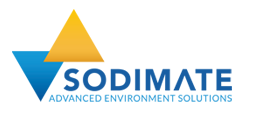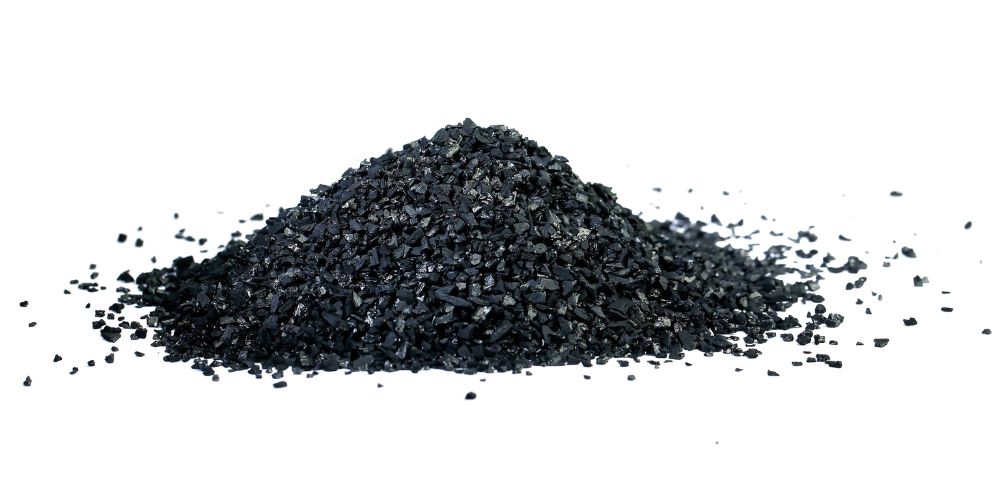There are numerous uses for activated carbon in different sectors. Depending on the usage, it can be used in different forms. Outlined below are more details about this lightweight and unique material, including some of its benefits and applications.
What is Activated Carbon?
Activated carbon is a type of carbon that has been processed to increase its surface area and porosity. This makes it an effective adsorbent, meaning it can attract and hold other molecules on its surface. Activated carbon is used in a variety of applications, including water purification, air purification, and odor control. It is a very economical solution for different industries because it’s easy to source and can be formed from a base material that’s either wood, coal, or coconut shells. Each base material may offer a slightly different product, but it will generally function identically in different applications.
Applications of Activated Carbon
Activated carbon is a highly porous material that is used to remove contaminants from water, air, and other liquids and gases. It is made by heating organic materials, such as wood, coconut shells, or coal, in the absence of oxygen. This process creates a network of tiny pores that can trap and remove a variety of contaminants, including:
- Chlorine
- Heavy metals
- Organic pollutants
- Volatile organic compounds (VOCs)
- Dust
- Pollen
- Hydrogen sulfide
- Carbon monoxide
- Ammonia
- Precious metals
Here are some of the uses of activated carbon.
Air and Gas
Different kinds of activated carbon can be employed to filter gases. The specific form is chosen based on the intended outcome and includes cloth, pelletized, and granular activated carbon. Some of the most popular gas purification applications for activated carbon include removing hydrogen sulfide from natural gas and filtering breathing air in air-conditioning units. In this second application, activated carbon helps remove radon and odors from the recirculated air.
Mining
Activated carbon is also used in mining to recover precious metals, particularly gold. Due to its adsorbent nature, activated carbon is utilized in separating carbon from cyanide in the final stages of mining.
Food and Beverages
Activated carbon is used in the food and beverage sector to enhance the purity, fragrance, and taste of several foodstuffs and beverages, including concentrated juice. Sweeteners can also be decolorized and have unwanted by-products removed from them using activated carbon.
Water Treatment
Activated carbon is used in water purification as both a primary and tertiary treatment. For water purification, both granular and powdered activated carbon is used. In the initial treatment, the main purpose is to remove large particles and retain them. In the final stages of water treatment, activated carbon is used for taste and odor control.
Types of Activated Carbon
There are mainly five types of activated carbon. Each is better suited to a certain application than another, and here are the main forms of activated carbon you will come across.
Granulated Activated Carbon
Granulated activated carbon has a smaller external surface than powdered activated carbon as a result of its slightly larger particle size. This type is mostly utilized in general deodorization, air treatment, and water treatment.
Pelletized Activated Carbon
This is powdered activated carbon that has been mixed with a binder and formed into pellets. The pellets are typically employed in gas phase applications because they have a low dust content, good mechanical strength, and a low-pressure drop.
Powdered Activated Carbon
This is a fine form of activated carbon, and it is typically added directly to process units like raw water intakes, gravity filters, and clarifiers. Due to the probable head loss that might happen, it is rarely utilized in a dedicated vessel.
Impregnated Activated Carbon
This form of activated carbon is infused with inorganic impregnates like silver and iodine. The biggest application for impregnated activated carbon is in the purification of domestic potable water.
Catalytic Activated Carbon
This fifth type of activated carbon is also called surface-modified activated carbon. In addition to being adsorptive, it may also initiate and enhance chemical processes, which makes it useful for removing contaminants from drinking water.
Benefits of Activated Carbon in Water Treatment
In the application of treating water, activated carbon offers several benefits over other alternatives that can be used in its place. Here are four core benefits of using activated carbon in water treatment.
Removal of Contaminants
As mentioned, activated charcoal attracts and retains contaminants. This adsorptive nature makes it possible for it to effectively remove a large number of contaminants of different types and sizes from the water.
Taste and Odor Control
When the right type of activated charcoal is put to use, it’s possible to improve the taste of water to a noticeable degree. Odors are also effectively controlled by using activated carbon.
Absorbs many components
The reason why activated carbon is popular in water purification is because of its ability to absorb not just one or two, but many components. This makes it effective and affordable to use, qualities that any water purification plant would be interested in for the sake of its overheads and the quality of production.
Reliable and efficient
Activated carbon is incredibly reliable and efficient. As long as all relevant aspects are taken into consideration, there is very little danger of failure when the appropriate form is utilized. It is a tried and tested solution that has improved over time to become the standard method in the water purification sector.
Activated Carbon V/s Activated Charcoal
Activated carbon and activated charcoal are both highly porous materials that are used to filter contaminants from water and air. However, there are some minor differences between the two materials. Activated carbon is produced by subjecting carbonaceous materials to high temperatures and chemical treatments, while activated charcoal is produced by simply burning carbonaceous materials in the absence of oxygen. Activated carbon is also more porous than activated charcoal, which makes it more effective at filtering contaminants.
To provide the appropriate standard for each application, Sodimate supplies high-quality activated carbon equipments customized according to the nature of application. From the beginning until the point of injecting the sorbent, Sodimate provides support for entire powdered activated carbon injection systems for dry and semi-wet injection processes. Speak to our experts today to get assistance in designing the perfect activated carbon equipment for your plant.
FAQs
Activated carbon is produced by subjecting carbonaceous materials to high temperatures and chemical treatments. Physical activation involves heating the materials, while chemical activation involves impregnating them with activating agents and then heating them. Impregnated activated carbon is created by treating activated carbon with additional chemicals.
Activated carbon is generally safe to use. However, it is essential to follow the manufacturer’s instructions and use them in the recommended manner. Activated carbon is commonly used in various applications, including water and air purification, with no significant health risks when used correctly.
Yes, activated carbon can be regenerated to restore its adsorption capacity. Regeneration methods vary depending on the type of activated carbon and the contaminants it has adsorbed. Common methods include thermal reactivation and chemical regeneration.












